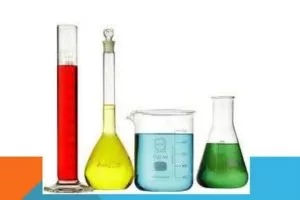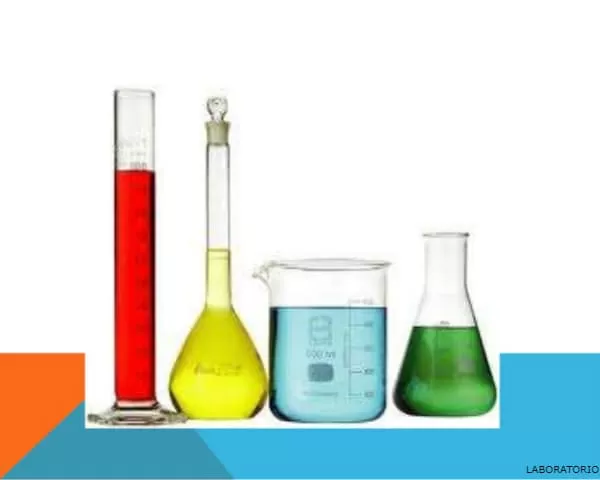Names of Instruments and Laboratory Materials
Precipitated Glass, flask, Petri dish, Distillation Ball, Laboratory Tripoid, Burettes, Graduated Pipettes, Muffle, Laboratory Stirrer, Magnetic Stirrer, Crystallizer, Test Tube, Densimeter, Volumetric Vials, Condensers, Funnels, Double Nut, Porcelain Triangle, Laboratory Stove, Slides, Stirring Rods, T-shirt, Dryers, Platinum Wire.
Also: Dissecting Hand, Two-Plate Scale, Scalpel, Preparation Box, Safety Glasses, Latex Gloves, Precipitation Cup, Erlenmeyer Flasks, Florence Vials, Test Tube, Capillary Tube, Coolant Tube, Thiele Tube, Clock Glass, Crucible, Volumetric Tube, Dripper, Ring Supports with attached rings, Tweezers, Laboratory Proprietary, Spatulas and Scoopulas.
Also: Thermometers, Scale, Rosario Coolant, Instrument Analyzer, Atomic Physics Equipment, Computer Equipment and Software, Electrical Equipment, Laser Apparatus, Measuring Tools, Microscopy and Image Equipment, Photonics Equipment, Porcelain Capsule, Handheld Mortar, Rack, Crucible Tweezers, Dissecting Trays, Dissecting Case, Bunsen Lighter, Micrometer, Pipettes, Graduated Cylinders, Flasks, among others.
Click on the Instrument or Laboratory Material of your interest and that you find in ALPHAPEDIA
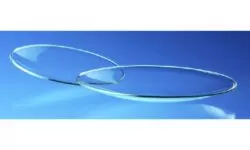
WATCH GLASS PRICE
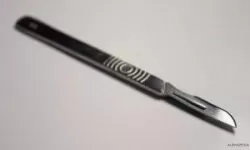
DIAMOND KNIFE PRICE. Reviews and Offers
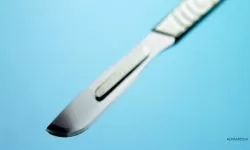
SCALPEL PRICE: Reviews and Offers
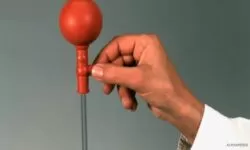
PROPIPETTE PRICE: Prices, Reviews and Offers
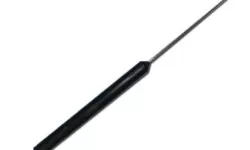
DISSECTING NEEDLE: Prices, Reviews and Offers
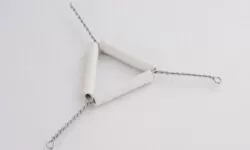
CLAY TRIANGLE: Use, Function and Price
Wooden Laboratory Equipment and Materials
Wood laboratory products are widely requested by renowned laboratories. The most common ones you can find are the wood pipette stand, wood sliding storage cabinet and wood test tube stand.
Glass Laboratory Instruments and Materials
There is a wide variety of different glassware in a laboratory, and they can be manufactured from various types of glass, depending on the purpose. For example, quartz glass is resistant to high temperatures and transparent in specific areas of the electromagnetic spectrum.
Heavy-walled glass is specifically reinforced for use in pressurized experiments, while amber glass darkens to block UV and infrared radiation, making it ideal for storing liquids.
Here are some of the different types of glass equipment used in laboratories and their functions:
Bulbs and graduated pipettes: These are used to transport specific quantities of fluids from one place to another.
Burettes: These are used to dispense exact amounts of liquid into another container.
Cups: Simple containers used to contain samples and reagents.
Volumetric Vials: Like beakers, these are used to hold samples, but usually come in a conical or spherical shape with a sharp neck.
Condensers: Specifically used to cool heated liquid or gas.
Replicas: These are used for distillation purposes.
Funnels: The conical neck of a funnel allows a liquid to be easily poured into a narrow orifice.
Petri dishes: Shallow dishes used for the culture of living cells.
Graduated Cylinders: Similar to precipitated vessels, these cylindrical vessels have volumetric markings to allow volume monitoring.
Bottles: Small bottles used to store samples or reagents.
Slides: Used to keep items under a microscope for inspection and study.
Stirring Rods: Used to mix solvents and samples together.
Desiccators: A container designed to absorb moisture from a substance.
Dryer Guns: Similar to a desiccator, the gun is a more direct method of removing moisture from a sample.
Biology Laboratory Equipments and Materials and their Functions
The biology laboratory is the place where material related to living beings is worked on, where practices are carried out at the cellular or microscopic level as well as at the macrocellular level, organs, tissues or systems, with these activities it is tried to differentiate the structure of living organisms and even to identify some of the elements that integrate them.
We can find instruments such as: Test tube, Precipitated glass, Erlenmeyer flask, Burette tweezers, Crucible tweezers, Agitator, among others. Besides them there are also:
Platinum Wire
It is used for sowing fungi and bacteria.
Dissection Needle
They can be with plastic handle, metal or wood, there is straight or curved tip. They are used to open with notable facility those parts of the tissues (animals or vegetables) that try to hide before our sight, with its so fine tip, also helps to stop in the position that is desired what is observed, as well as for the process of preparation of diverse substances and dissections.
Two-course Scale
It is a very important instrument that you have to handle in the laboratory to make heavy, is stainless steel with a bar. The balance used in chemistry is based on the principles of the lever. The two indispensable conditions of a balance are: accuracy and sensitivity.
Distillation Ball
To heat liquids, whose vapors must follow an obligatory path (towards the refrigerant), so they have a side outlet.
Scalpel
It is an instrument with a sharp blade, its handle can be made of wood, plastic or metal. It is used to make cuts on the skin of animals during dissection.
Petri Box
There are different sizes; it is used to prepare cultures of fungi and bacteria, and also to select animal samples.
Preparation Box
It is used to store those preparations or compounds that are permanent.
The Petri dish
It is used to observe microorganisms in the laboratory.
Chemistry Laboratory Instruments and Materials
The first and most important rule of any lab is to be safe! This may seem obvious, but people often ignore security protocols for one reason or another, endangering themselves and those around them. The best thing you can do is to make sure you follow all security protocols at all times.
Safety glasses are mandatory in all chemistry labs. Not wearing them puts you in danger of eye irritation and possibly blindness in the event of an accident. A small drop of acid could splash out of the container at any time. Better safe than permanently blinded!
Latex gloves should be worn when there is a possibility of corrosive chemical spills on your hands. An apron or lab coat can also prevent injury from spills or splashes.
Precipitates Cup: This is a common cup in most laboratories. It is used to mix, shake, and heat chemicals. Most cups have nozzles on their edges to help pour. They also often have lips around their edges and markings to measure the volume they contain, although they are not an accurate way to measure liquids. Cups come in a wide range of sizes.
Erlenmeyer flasks: Also known as a conical flask, the Erlenmeyer flask received its name from its inventor in 1861. It has a narrow neck and expands towards its base. This allows easy mixing and agitation of the flask without too much risk of spillage.
Florence flasks: also known as a boiling flask, the Florence flask has a round bottom and a long neck. It is used to hold liquids and can be easily rotated and heated. It can also be covered easily with rubber or glass stoppers.
Test Tube: is a glass tube with one end open and the other closed. The closed end is rounded. Test tubes are used to contain small samples. They are mainly used for qualitative evaluation and comparison.
Clock Glass: is just a round piece of glass that is slightly concave/convex (think of a lens). It may contain a small amount of liquid or solid. They can be used for evaporation purposes and can also function as a lid for a beaker.
Crucible: is a small clay cup made of a material that can withstand extreme temperatures. They are used to heat substances and come with lids.
Funnel: A laboratory funnel is like any other funnel, except that it was designed to be used in a laboratory environment. They can be plastic or glass and can have a short or long stem, depending on what they are needed for. There are several sizes that can be chosen according to the amount of liquid needed to pass through them quickly.
Volumetric flask: A volumetric flask is a round flask with a long neck and flat bottom. It is used to measure an exact volume of liquid. There is a small line on the neck that indicates how far away you should fill the bottle (use the bottom of the meniscus). They come with special caps that won’t let anything in or out.
Dripper: These are small glass tubes with narrow ends at one end and a rubber bulb at the other. They suck the liquid that can then be squeezed into small drops. They can be used to add an indicator to a solution about to be squeezed.
Burette: is a glass tube that is open at the top and reaches a narrow, pointed opening at the bottom. Just above the bottom opening is a stopcock that can be turned to control the amount of liquid being released. There are markings along the length of the tube that indicate the volume of liquid present.
Ring Supports with United Rings: The ring support is used to suspend burettes, flasks, flasks, crucibles, etc. over other containers or, in some cases, a heat source (such as a Bunsen burner, described below).
Tweezers: Tweezers are for grasping things that should not be touched by hand. Some tweezers are made especially to hold cups, others to hold test tubes, etc. There are also general tweezers.
Tweezers are used to grasp small objects, such as solid chemicals that are broken into pieces, so that they can be handled and safely added to containers.
Spatulas and Scoopulas: Spatulas and scoopulas are for collecting solid chemicals. They are usually used to remove a chemical from its original container in a weighing boat so that it can be weighed on a scale.
Thermometers: A laboratory thermometer is used to measure the temperature of liquids. It can be made of glass or it can be a thermocouple of different metals.
Burner: A Bunsen burner is a mechanical device that is connected to a source of flammable gas. There is a knob for adjusting the amount of gas flow and a rotating collar that controls the air flow. These two must be adjusted to obtain an ideal flame for heating purposes. The burner is lit with a front.
Scale: A scale is used to weigh chemicals. Chemicals are always in some kind of container and are never placed directly on the scale. It is important not to move a scale because they have been calibrated for the exact position they are in.
Some balances have a plastic housing with small doors to prevent drafts from affecting the measurement. Close these doors when the balance is in use.
Physics Laboratory Equipments and Materials
General Laboratory Equipment
The most basic physics laboratory equipment includes fume hoods, desks, tables, benches and gas, water and vacuum lines. Safety equipment may include gloves, goggles and eye wash stations.
Instrument Analyzer
Numerous instruments perform sample analysis in physics laboratories. Examples include impedance analyzers, particle analyzers, multichannel optical analyzers, semiconductor parameter analyzers, spectrum analyzers, capacitance-voltage (CV) analyzers, and X-ray diffractometers to characterize crystalline materials and identify phases.
Atomic Physics Equipment
Atomic physics labs contain unique devices. These may include saturation absorption spectroscopy, RF optical pumping, and pulsed NMR.
Computer Equipment and Software
Physics labs rely heavily on computer hardware and software for data analysis.
Electrical Equipment
A number of devices assist in electrical work in physics laboratories. In addition to the CV analyzer, other equipments include variable transformers (variacs), blocking amplifiers and piezoelectric actuators.
Laser Apparatus
HeNe lasers are used in optical experiments. They require safety glasses to protect the eyes.
Measurement Tools
Physics labs require devices to ensure accurate measurements. Even subway sticks play a role.
Microscopy and Imaging Equipment.
Microscopes handle images in physics laboratories. Biophysics laboratories can use fluorescence microscopes and bright field microscopes.
Photonics Equipment
In biophysical laboratories, optical forceps are used to manipulate individual DNA molecules. They also help measure biomolecular forces.
Among other instruments you can find in physics labs.
Porcelain Equipments and Laboratory Materials
The most used are:
Porcelain Capsule
It is hemispherical in shape and is used to make preparations.
Mortar With Hand
It is made of porcelain or glass, used to grind substances or to combine or mix different substances during the experiment.
Metal Laboratory Equipments and Materials
Some of them are the following:
Rack
A rack is a tool that is part of the laboratory (chemical) material and is used to hold and store test tubes or other similar material. There are several types of racks: plastic racks, polypropylene racks: sterilizable, suitable for working in water baths…
Crucible Forceps
This clamp, like others, is used to hold and transport the crucible because it works with high temperatures and there are also different sizes.
Dissecting Trays
They are of diverse measures and sizes. Useful to place the instruments that will be used in the experiment, also serves to make dissections of very small animals.
Dissection Case
It is made up of various utensils such as magnifying glass, tweezers, agitator, etc., which are necessary for dissection.
Bunsen Cigarette Lighter
It is a device consisting of a vertical tube supported on a foot or small platform to which it is screwed.
Microtome
It is used to make cuts in vegetables or animals with micron measures of thickness.
Laboratory Instruments for Measuring Volumes
We Can Find Equipments Such As:
Pipettes: There are a variety of pipettes designed to achieve specific objectives. However, all of them are to measure an exact volume of liquid and place it in another container.
Graduated cylinders: This is a primary measuring tool for the volume of a liquid. There are several up and down marks along the container with specific increments. Graduated cylinders come in many sizes. The smaller the diameter, the more specific the volume measurements will be.
When reading the volume of a graduated cylinder, you will notice that the liquid appears to have a notch.
The liquid around the edges will be higher than the liquid in the center, leaning down like the sides of a trampoline when someone is standing in the middle. This is called the meniscus.
Align the lowest point of the meniscus with the nearest mark, keeping the level of the cylinder to correctly read the volume.
Cups and flasks: Precipitation beakers and Erlenmeyer flasks can be used for approximate volume measurements, provided the graduated volume levels are printed on the side of the beaker or flask (not all beakers and flasks have these marks).
They are usually accurate within 5%. The volumetric flask, designed for greater accuracy, usually has an accuracy of 0.05%. Its uses include the preparation of solutions of known concentration.
Other Products of Interest in ALPHAPEDIA

GRAMS SCALE: What Is It For ? Models and Brands

TYPES OF PROPIPETTE

TANITA SCALE: Prices and Offers

MILITARY BOOTS: Brands, Styles and Prices

BUY A CELL PHONE
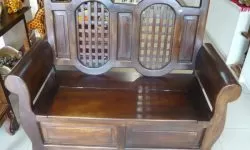
OLD WOODEN BENCHES: Great Price on Qualified Products
Other Topics of Interest in ALPHAPEDIA
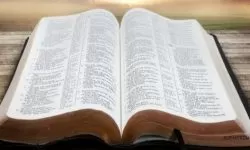
ECCLESIASTES 3
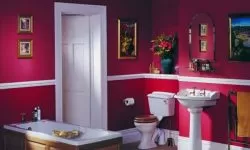
BORDEAUX COLOR: Its Meaning and How to Combine It

FREE FURNITURE RESTORATION COURSE

FREE BACHELOR DEGREE IN LITERATURE

BACHELOR DEGREE IN SURGICAL INSTRUMENTATION

FREE MINDFULNESS COURSE
Drawings of Laboratory Equipments
